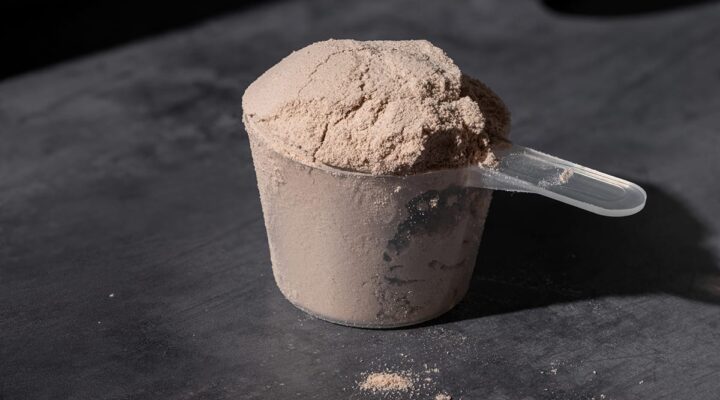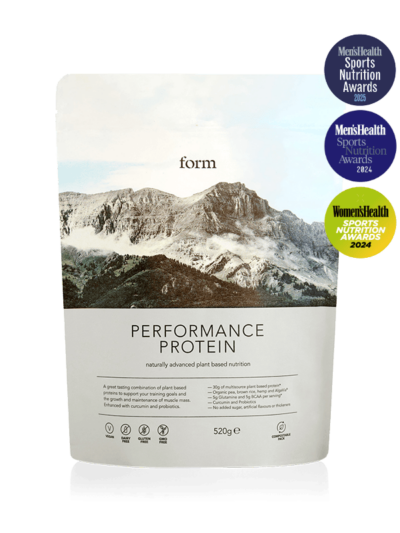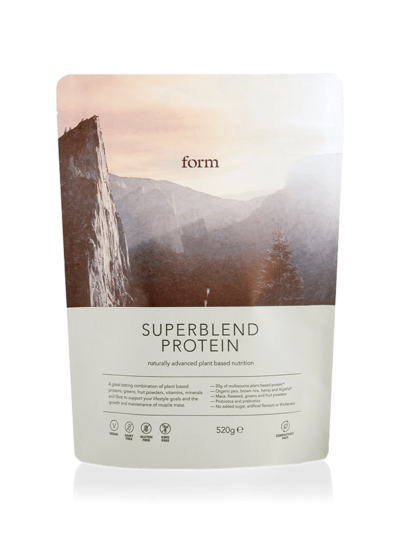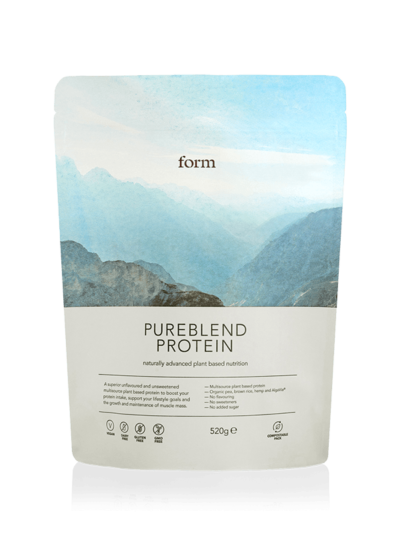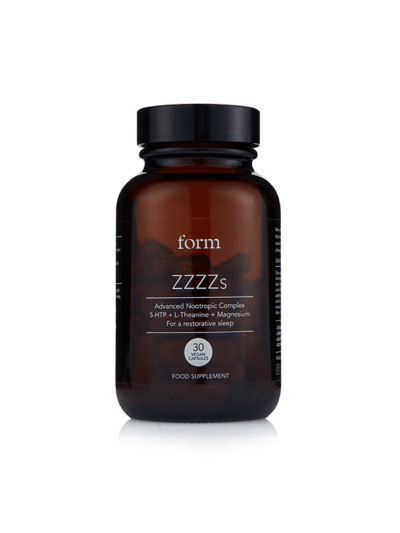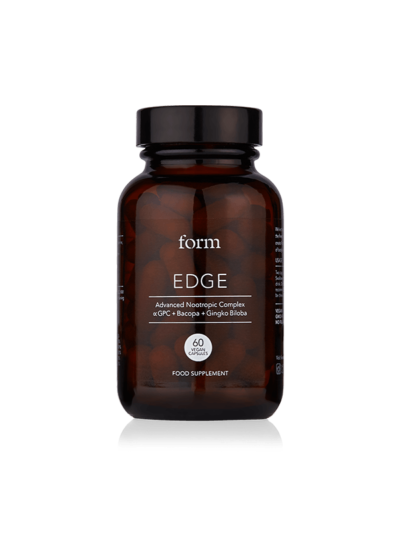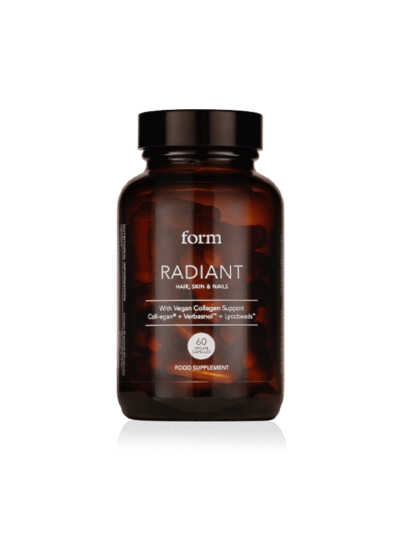Plant Protein Is Just as Good for Building Muscle as Animal Protein, Says Leading Professor

For decades, the common belief has been that if you’re serious about building muscle, animal-based foods like chicken, beef or salmon will get you there faster than, say, beans or broccoli.
Ask any biltong-chewing gym bro, and they’ll likely tell you that meat is easier to digest, meaning your body can absorb more protein from it. Animal products are known to contain higher concentrations of amino acids, giving them, so the argument goes, a clear edge over their leafy counterparts.
However, according to Stuart Phillips, a professor of Kinesiology at McMaster University, the gap between animal and plant proteins and their ability to support our muscles might not be as wide as we’ve been led to believe. After decades spent researching how nutrition affects skeletal muscle, he now considers plant proteins to be just as effective for muscle growth. Here, he explains why
Understanding the assumed advantage of animal-based proteins
Most of us know by now that protein and muscle-building go hand in hand – especially after a heavy workout when the macronutrient’s amino acid content helps to repair damaged proteins in muscle tissue. It’s this ‘damage and repair’ process – what Phillips calls protein turnover – that ultimately makes muscles grow bigger and stronger over time.
Animal-based proteins are often seen as the gold standard after exercise because they’re ‘higher quality proteins’, meaning they contain high levels of all nine essential amino acids that the body can’t make on its own. Adding to their appeal, meat and fish are generally thought to be easier to digest, so your body can absorb more of the protein.
But is all of that actually true? “There’s a scientific truism around the idea of animal protein being higher quality,” says Phillips. “Researchers use two indices to define protein quality: the protein digestibility corrected amino acid score (PDCAAS) and the digestible indispensable amino acid score (DIAAS) – and yes, animal proteins usually rank higher than plant proteins on both.”
However, he adds: “What we’re seeing now in research is that the difference between [these scores] probably doesn’t matter quite as much as we first thought.”
Why plant proteins are just as effective as animal proteins
Phillips didn’t always believe plant protein could match up to meat. In fact, his opinion has shifted significantly throughout his decades-long career, thanks to some surprising research findings in his own lab.
“If you’d asked me 27 years ago when I first started out in this field, I would’ve told you that animal proteins are better for building muscle,” he admits. “But there were two key moments during research that changed my mind.”
The turning point came in 2022, when Phillips led a meta-analysis at McMaster University. “These techniques allow us to look across a range of studies to understand the bigger picture, in this case, how protein supplementation affects muscle growth,” he explains.
The analysis focused on studies involving people lifting weights while taking either animal or soy-based protein supplements. And the results lead to some unexpected conclusions.
“When comparing soy to other sources, mostly milk-based proteins, but also beef and chicken, there was no marked difference in the amount of muscle gained,” says Phillips.
“While protein supplementation helped build muscle, the analysis revealed that it didn’t matter whether that protein came from soy, egg, whey or casein.”
Since then, Phillips and his team have continued to compare plant-based proteins directly against animal-based varieties in further studies. “They’ve all come back showing minimal differences, certainly not as much as I would have expected based on the superiority of the scores,” he says.
His conclusion? “Most plant proteins are much closer to animal proteins than everybody thinks,” he says. “The difference is there, but physiologically, the outcome is indistinguishable.”

Is soy a super plant that’s far superior to others?
Not exactly, according to Phillips. “Historically, soy was the only plant-based protein widely available to test,” he clarifies.
Fast forward to 2025, and there’s now a growing number of vegan protein sources, like pea, rice and pumpkin, all catering to a rise in active consumers seeking plant-based alternatives.
“We’re now beginning to investigate alternative plant sources and finding that they’re not that different from soy, or animal protein, when it comes to building muscle.”
What about the amino acid debate?
One of the most persistent myths about plant-based proteins is that they’re somehow ‘incomplete’ and lack essential amino acids the body needs. But according to Phillips, it’s time for gym-goers to put that idea to bed.
“We have to stop saying that plant proteins are deficient in amino [acids]. That’s not true,” he says. “It’s so rare to find a plant protein that is deficient and doesn’t have one of the essential amino acids.”
While, sure, it is true that some plant proteins may be lower in certain essential amino acids, that’s not the same as being deficient.
“Certain amino acids that are lower in most plant-based proteins,” says Phillips. One in particular, leucine, is often highlighted.
“Because of this, you might need to eat a bit more [plant protein] to get the same amount of leucine as you’d get from animal protein,” explains Phillips.
As leucine plays a key role in muscle protein synthesis, it’s this amino that often dominates the animal vs plant discussions. But, according to Phillips, the gap between the two protein sources is a lot smaller than expected: “Just a small increase in the amount of plant protein you eat can bring you up to a similar leucine level [as animal types], which makes the overall effect pretty much the same,” he reveals.
In other words, plant-based proteins can be just as effective, provided you’re getting enough of them.
Does the bioavailability argument still stand?
So what about the common perception that plant proteins are significantly less digestible, and therefore less effective, than animal proteins? As Phillips explains, that argument is true, but it doesn’t hold up in the context of modern plant-based protein products, such as Form.
In whole plant foods like lentils, peas, and grains, digestibility can indeed be an issue. These foods contain natural compounds known as anti-nutrients (such as phytates and oxalates), which can interfere with protein absorption. Add in the fibre content, and it’s true that the body can have a harder time accessing all the protein they provide.
“But once you get an isolated plant protein, like a protein powder, the issue of digestibility is gone,” explains Phillips. “It’s disappeared, because you’ve removed protein from the plant source itself.”
In other words, when plant proteins are isolated, such as in protein powders, the digestibility concern largely vanishes. What’s left is the pure and uninterrupted protein itself, free of the fibre and anti-nutrients that typically mess with our absorption.
Why do we bother with the protein scoring system then?
As Phillips pointed out earlier, protein quality is often measured using two key scoring systems, both of which have long been used to justify the superiority of animal-based proteins. But how relevant are these scores for the average gym-goer reading InForm?
“These scoring systems do have real relevance in food-insecure regions,” Phillips explains. “For organisations like the World Health Organization, focusing on the highest quality protein makes sense, especially when it comes to feeding growing children to ensure they get the best nutrients.”
Fully grown adults living in food-secure cities, towns and neighbourhoods however? The scoring system is less of a big deal, says Phillips, because the body isn’t building as much tissue (e.g muscle or bone) as in children, so the exact amino acid composition of the protein matters far less. Plus, in wealthier areas, people usually get enough protein to meet their needs anyway.

4 practical ways to reap the benefits of this plant-powered knowledge
1. Consider switching to plant-based protein supplements
There are a ton of whey and plant-derived protein supplements out there, so picking one can be overwhelming. The main argument for whey has long been that it naturally contains more of the amino acid leucine, which supports muscle growth.
But as we’ve discovered, these differences are so negligible, it’s unlikely to have any real effect on your gym gains. So, you might prefer to switch to plant proteins – and reap the extra benefits of more fibre and antioxidants, less chance of gut discomfort and a choice that’s kinder to the planet and animals.
2. Eat an extra serving of plant protein per day
If you’re attempting to build muscle on a plant-based diet, you might need to up your protein intake. That higher intake level is where Phillips says the differences between plant and animal proteins become negligible.
“Generally, I recommend protein intakes that are above the US and Canada Recommended Dietary Allowance or the UK’s Recommended Nutrient Intake anyway – about 1.2 grams of protein per kilogram of body weight, instead of around 0.8,” he advises.
3. Focus on protein after exercise
After a workout, your muscles are in a prime spot to utilise protein. “Post-exercise is when your muscles become like a sponge,” says Phillips.
That’s your golden window to pack in a quality protein source, such as a shake, a meal or a healthy plant-based snack.
4. Complement your plant proteins
As we mentioned earlier, some plants can be lower in certain amino acids. Aside from eating a higher volume of them, pairing your proteins is a good way of ensuring you get enough.
“For example, grains are low in lysine, and legumes are low in sulphur amino acids, so together they form a complete profile,” explains Phillips. Pairing rice with beans, or lentils with quinoa, is another way to cover all your bases and guarantee you’re reaping the full brawn-building benefits.







